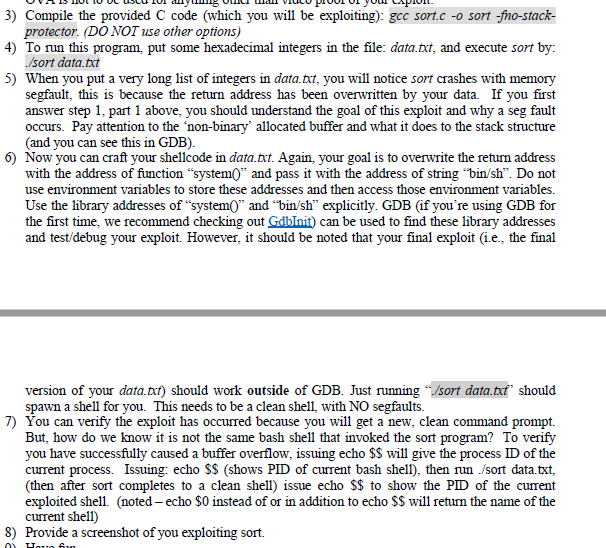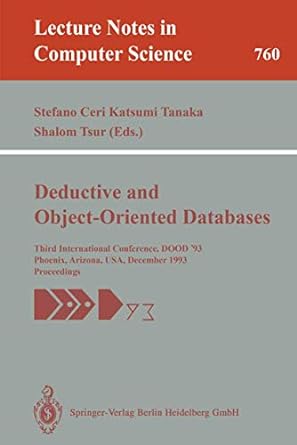Answered step by step
Verified Expert Solution
Question
1 Approved Answer
2. Exploiting Buffer Overflow (50 points) The attached C code (sort.c) contains a stack buffer overflow vulnerability. Please write an exploit (by modifying data.txt) to
 2. Exploiting Buffer Overflow (50 points) The attached C code (sort.c) contains a stack buffer overflow vulnerability. Please write an exploit (by modifying data.txt) to open a shell on Linux. The high level idea is to overwrite the return address with the address of function system(), and pass the parameter /bin/sh to this function. Once the return instruction is executed, this function will be called to open a shell.
2. Exploiting Buffer Overflow (50 points) The attached C code (sort.c) contains a stack buffer overflow vulnerability. Please write an exploit (by modifying data.txt) to open a shell on Linux. The high level idea is to overwrite the return address with the address of function system(), and pass the parameter /bin/sh to this function. Once the return instruction is executed, this function will be called to open a shell.
Step by Step Solution
There are 3 Steps involved in it
Step: 1

Get Instant Access to Expert-Tailored Solutions
See step-by-step solutions with expert insights and AI powered tools for academic success
Step: 2

Step: 3

Ace Your Homework with AI
Get the answers you need in no time with our AI-driven, step-by-step assistance
Get Started


